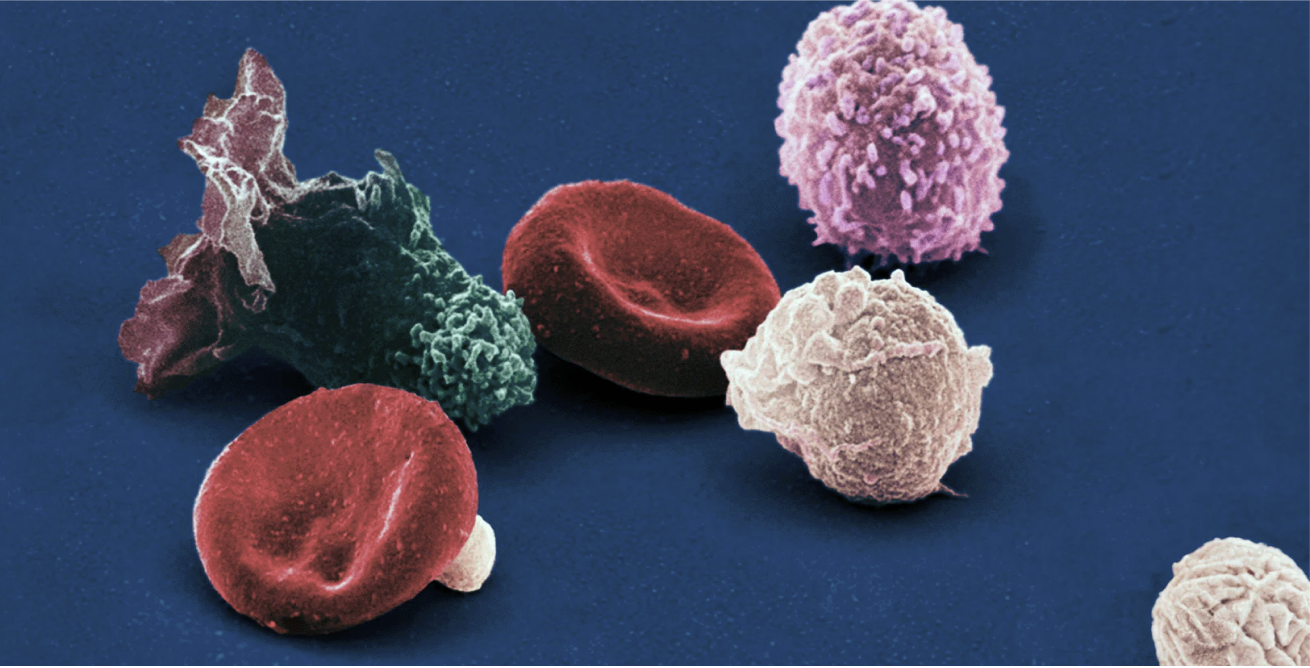|
|
|
|
Thanks for reading The Abstract. This month’s edition is
1,115 words, about a
4-minute read.
Is there a topic that you’d like to see more of in
The Abstract? Drop us a line at
abstract@elysiumhealth.com. Want to get
The Abstract in your inbox? Sign up here.
|
|
|
|
|
|
|
|
|
|
|
|
|
|
|
|
|
|
|
Welcome to the February edition of
The Abstract. This month is a deep-dive into new studies related to multiple hallmarks of aging, with a focus on two that are related—inflammaging and cellular senescence. In our lead study, researchers discovered that inflammaging is strongly associated with accelerated epigenetic aging. Other important findings include: early life social stress and its effect on senescent cell burden, how the brain clears waste while we sleep (and why Ambien disrupts this), evidence that fitness matters more than thinness for longevity, and the role of mitochondrial NAD+ deficiency in aortic aneurysm.
|
|
|
|
|
|
|
|
|
|
|
|
|
Inflammaging is associated with faster aging and mortality risk
|
|
|

|
|
|
|
Systemic inflammation associated with aging, or inflammaging, is one of the 12 hallmarks or key drivers of aging. Researchers at the University of Michigan investigated the relationship between inflammaging, age acceleration—the difference between
biological age and chronological age—and mortality risk in older adults using data from the Health and Retirement Study, a nationally representative sample of U.S. adults over 50. They created a measure for systemic inflammation based on seven inflammatory markers present in the blood, including cytokines and immune cell ratios.
|
|
The study found a positive correlation between higher levels of inflammation and accelerated aging across 10 out of 13
biological age clocks tested. The findings also demonstrated that systemic inflammation was a stronger predictor of 4-year mortality compared to any individual clock or risk factor. This suggests that while inflammation and epigenetic aging are both risk factors for mortality, they may represent different biological processes contributing to mortality. The study highlights the central role of inflammaging in aging and opens the door to potential interventions that address systemic age-related inflammation.
|
|
The Expert’s Take:
|
|
“There were two important findings from this study: 1) inflammaging (as determined by their measure) was a stronger predictor of 4-year mortality than well-established mortality risk factors, including obesity and multimorbidity, and 2) inflammaging and epigenetic aging were strongly but independently associated with mortality. The latter result points to the complexity and multi-faceted nature of aging. It suggests that the integration of different markers of aging, such as inflammaging and epigenetic aging, may contribute to an improved understanding of aging and age-related diseases. It’s worth noting that the study did not analyze newer, system-specific epigenetic clocks, which predict biological ages for individual organs or systems such as the immune system. And studies examining longitudinal associations between inflammaging and epigenetic aging will be needed to determine if these parallel pathways converge or diverge as we get older.”
|
|
Holly Holmes, Ph.D.
|
|
Director of product development, Elysium Health
|
|
|
|
|
|
|
|
|
|
|
|
|
Target age-related inflammation with the new
Inflammaging Bundle
|
|
|

|
| Format contains a patented blend of tamarind and turmeric extract, clinically proven to reduce markers of inflammaging in joint and connective tissue conditions—a localized expression of systemic aging.
|
|
|
|
|

|
| Basis and
NR are shown to reduce markers of inflammation in a range of inflammation-related conditions and in healthy individuals.
|
|
|
|
Get prepaid subscriptions to both by 2/18 and save up to 20%.* Already a Basis or Format subscriber?
Extend your existing subscription to take advantage of the offer.
|
|
|
|
|
|
|
|
|
|
|
|
|
THIS MONTH
|
|
What We’re Reading
|
|
These are third-party articles about science that we find interesting but have no relationship to Elysium or any of our products. Elysium’s products are not intended to screen, diagnose, treat, cure, or prevent any disease.
|
Early life stress leads to senescence build-up
Cellular senescence, a state of permanent cell cycle arrest, is a hallmark of aging and is associated with chronic diseases. In a new study, researchers examined the link between chronic stress and cellular senescence by using mouse models of social and non-social stressors. They discovered that even short-term social stress increased markers of senescence in multiple organs, particularly in hippocampal and cortical neurons of the brain. Social stress also increased DNA damage and pro-inflammatory markers, pointing to some of the pathways through which stress may accelerate aging. (Nature Aging)
|
Your brain flushes waste during sleep (and sleep aids disrupt it)
The glymphatic system is the brain’s waste removal system, and it takes the trash out while we sleep—including harmful proteins linked to Alzheimer’s disease. Researchers at the University of Copenhagen discovered that oscillations of the neurotransmitter norepinephrine (NE) drive glymphatic clearance during non-rapid eye movement (NREM) sleep. These oscillations induce a slow and rhythmic constriction of blood vessels that help to pump cerebrospinal fluid (CSF) and clear waste. Importantly, the study found that while the sleep aid zolpidem (Ambien) promotes sleep, it also impairs oscillations in NE, blood, and CSF, “reducing both vascular and neuronal oscillatory dynamics and ultimately decreasing glymphatic flow.” (Cell)
|
For longevity, being fit beats being thin
Obesity is associated with an increased risk of mortality and cardiovascular disease (CVD), but studies show that focusing on weight loss alone isn’t very successful. In a new meta-analysis of 20 studies with a total of 398,716 participants, researchers found that fitness (measured using a maximal or VO2 peak exercise test), is a stronger predictor of mortality than Body Mass Index (BMI), with fit people having no increase in risk of death from CVD or all causes regardless of their weight. They also discovered that individuals with obesity but high fitness had a lower mortality risk than those with normal weight but low fitness. The findings suggest that physical activity may be a better intervention for health and longevity than weight loss. (British Journal of Sports Medicine)
|
Mitochondrial NAD+ implicated in aortic health
Aortic aneurysm is a rare but life-threatening condition. In a new study, researchers identified mitochondrial NAD+ deficiency as a key causal factor, supported by multi-omics analysis of human aortic samples and mouse models. Specifically, they found that inhibiting the transport of NAD+ into mitochondria or inhibiting NAD+ synthesis resulted in impaired type III collagen production—essential for the integrity of the extracellular matrix and aortic wall. Other studies in mice have found that moderate aerobic exercise and NAD+ supplementation were protective against aortic pathology. Currently, there is no evidence confirming whether these interventions are effective in humans. (Nature Cardiovascular Research)
|
|
|
|
|
|

|
|
|
|
|
|
|
|
TERM OF THE MONTH
|
|
Inflammaging
|
|
/ˌɪnfləˈmeɪdʒɪŋ/
|
|
Inflammaging is chronic, low-level systemic inflammation associated with aging. It’s one of the 12 hallmarks of aging and it’s a risk factor for a range of age-related conditions. It’s characterized by elevated inflammatory markers like IL-6, CRP, and TNF-ɑ. Unlike the body’s healthy inflammatory response, inflammaging occurs in the absence of infection or injury.
|
|
|
|
|
|
|
|
|

|
|
|
|
|
|
AGING 101
|
|
The connection between senescence and inflammaging
|

|
|
|
|
Senescent cells, which secrete pro-inflammatory molecules, accumulate with age and contribute to inflammaging. Learn more about the causes of inflammaging and how we can manage this hallmark of aging. (Read more)
|
|
|
|
|
|
|








